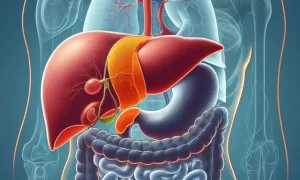What you know about zoonotic disease spillover risks during COVID-19 pandemic may be wrong
- Normal Liver Cells Found to Promote Cancer Metastasis to the Liver
- Nearly 80% Complete Remission: Breakthrough in ADC Anti-Tumor Treatment
- Vaccination Against Common Diseases May Prevent Dementia!
- New Alzheimer’s Disease (AD) Diagnosis and Staging Criteria
- Breakthrough in Alzheimer’s Disease: New Nasal Spray Halts Cognitive Decline by Targeting Toxic Protein
- Can the Tap Water at the Paris Olympics be Drunk Directly?
What you know about zoonotic disease spillover risks during COVID-19 pandemic may be wrong
- Should China be held legally responsible for the US’s $18 trillion COVID losses?
- CT Radiation Exposure Linked to Blood Cancer in Children and Adolescents
- FDA has mandated a top-level black box warning for all marketed CAR-T therapies
- Can people with high blood pressure eat peanuts?
- What is the difference between dopamine and dobutamine?
- How long can the patient live after heart stent surgery?
What you know about zoonotic disease spillover risks during COVID-19 pandemic may be wrong
COVID-19 is the first pandemic to come with the interconnectedness of the internet and social media in general.
As a result, the spread of opinion and information about the disease is unprecedented, but not always accurate.
Among the widely circulated headlines was the link between land change and the spread of disease from wildlife to humans.

On September 16, Andre D. Mader of the Institute for Global Environmental Strategies and colleagues in the journal Biological Sciences: A survey of primary and secondary literature on the topic of land change and zoonotic disease risk, as well as related web pages content.
Based on disturbing patterns uncovered from these literature and media reports, Mader and colleagues describe a case study that amounts to inappropriate science communication and its possible consequences.
According to the researchers, media messages have been describing direct causal links between zoonotic disease spread and land-use change throughout the pandemic.
Although only 53% of the peer-reviewed literature surveyed suggested this link.
In the report, the authors delve into some theoretical scenarios that would demonstrate the difficulty of tracking the true risk of the spread of zoonotic diseases, stressing that “the complexity of pathogen responses to land change cannot be reduced to one-size-fits-all claims.”
In addition, the authors found that the phenomenon of “exaggerated evidence” increased as the literature moved from primary research to review articles and reviews, and finally to web pages.
In fact, 78% of the secondary literature implied a land-use-fauna spillover association, which was found for all but one sampled web page.
In addition, the researchers noted that secondary sources and web pages often failed to mention the uncertainty associated with their conclusions.

Simplified messaging and lack of proper communication with regard to zoonotic spillovers have significant potential consequences.
This, Mader and colleagues say, could erode credibility, ignore the specific needs of local communities in decision-making, and distract attention from other factors that could lead to the spillover of zoonotic infectious diseases.
They recommend a more accurate, nuanced, and interpretive dissemination of research on zoonotic spillover risks, arguing that this approach would also benefit science more broadly.
As Mader and colleagues concluded, “If the goal of science communication is to increase understanding, it must strike a balance between being simple enough to be grasped by the widest possible audience, and being sufficiently nuanced. , to capture the complexity of the problem and contribute meaningfully to the discussion around it, especially as it goes viral.”
What you know about zoonotic disease spillover risks during COVID-19 pandemic may be wrong
(source:internet, reference only)
Disclaimer of medicaltrend.org
Important Note: The information provided is for informational purposes only and should not be considered as medical advice.



